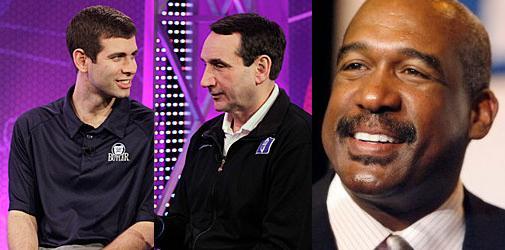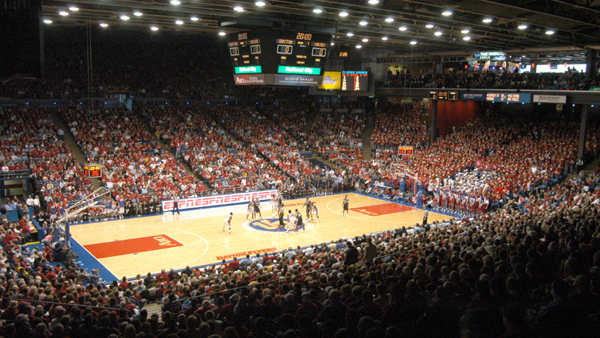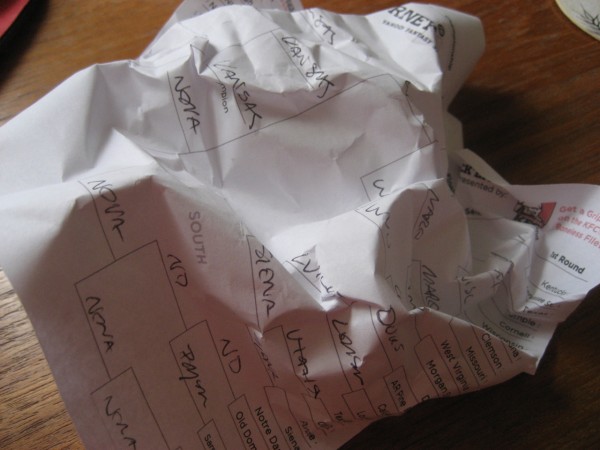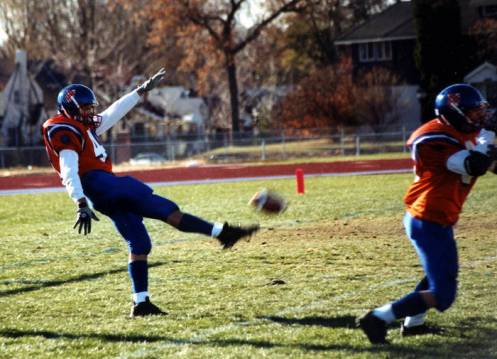NCAA Daily Diaries: First Four – Wednesday
Posted by rtmsf on March 17th, 2011RTC will be covering the NCAA Tournament from cover to cover this year, with correspondents at each of the fourteen sites over the next three weeks. These diaries are intended to give you insights to the games, coaches, players, fans media and everything else that you wouldn’t otherwise have known simply from watching on television. As always, feel free to offer suggestions for feedback in future versions that we can pass along to our correspondents. Here’s Wednesday’s Diary from Dayton…
The First Four, Wednesday – by John Stevens
Throughout the whole first half of the Alabama State vs. Texas-San Antonio game, the lament was frequently heard: “What on EARTH are we going to write about from this game?” UTSA came out and just socked the Hornets right in the collective jaw with easy drives into the paint and a defense that induced several unforced errors out of ASU. The halftime lead for UTSA was 27. And I know it sounds cliche’ to say it, but it’s true in this case — it wasn’t even THAT close. Melvin Johnson had 25 at the half — his CAREER HIGH, and ASU only had 21! — mostly on drives to the hole, silky fade-aways, and free throws. Everyone in the place shook their heads, wondering how they were going to endure watching another half of a spanking of this magnitude. Then, ASU coach Lewis Jackson began switching his defenses, Jeffery Middlebrooks started draining threes, and Chris Duncan started crashing the glass in force. The Roadrunner lead had shrunk to nine points late, but the Hornets could get no closer. Johnson only took four shots in the second half, and added just four points to end with 29. Despite the comeback by ASU, the matter was decided early. Johnson was just too good in that first half, and the Hornets simply took too long to shake off their jitters. That may have included the coaches — at one point in the first half, ASU received a technical foul for having six players on the floor. UTSA deserved the win, but I like the way ASU represented itself in the Dance by not just caving in. When they took the floor for that second half, there wasn’t one kid in an Alabama State uniform who thought that game was over.
My first tweet from UD Arena tonight complimented the Alabama State band. By far, the BEST I’ve ever seen and heard. Not only are the song choices original, but that wall of brass that comes from their section just makes you want to cry, and the young fellow on the drum kit will definitely put your subwoofer to the test. From the moment they played their first note, they had the whole arena in their pocket. I was simply one of a legion of listeners in the place who felt that way tonight.
People were tweeting, texting, and talking during the USC vs. VCU game about how they thought it was hard to watch, it was reminiscent of Wisconsin/Penn State from the Big Ten Tournament last week (I was at that game, and it was worse), and they couldn’t stand it. I would agree…but only for the first half. In the second, we saw guys try to take control and lift their squads, and I can always appreciate that. Jio Fontan (14/2 asst) got more aggressive in attacking the hole. Jamie Skeen (16/9) put his team on his back for several stretches, hitting mid-range jumpers and threes in succession, and Nikola Vucevic (11/13), frustrated on offense on this night, concentrated his efforts on defense and the glass. The chess match between coaches also got interesting, as Shaka Smart switched to a zone defense (on which more in a moment) and just flummoxed the Trojans, helping the Rams to distance themselves from USC late in the second half. It was almost as if the Trojans didn’t know what had hit them until it was too late.



















































